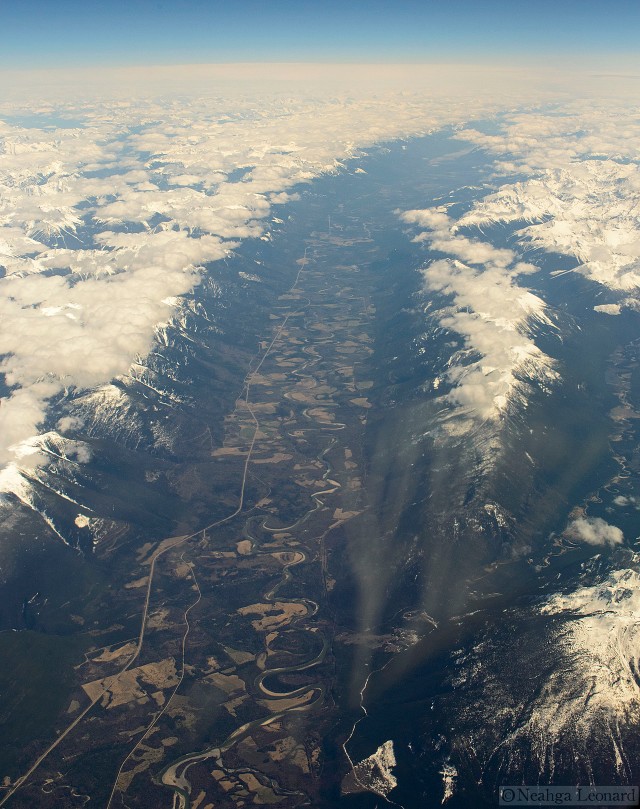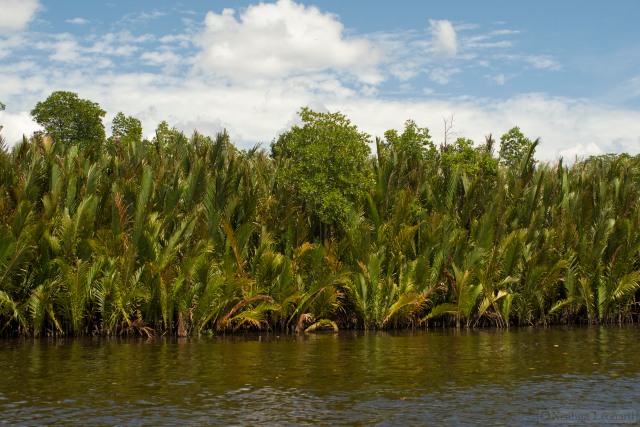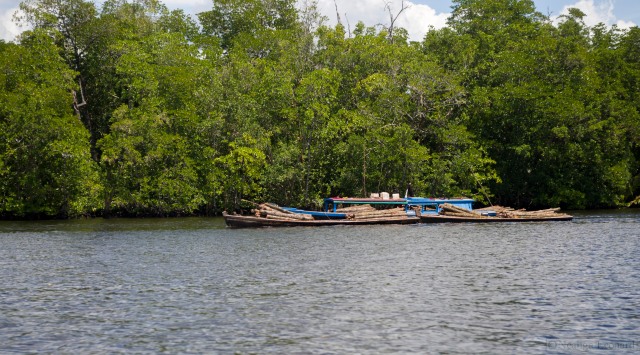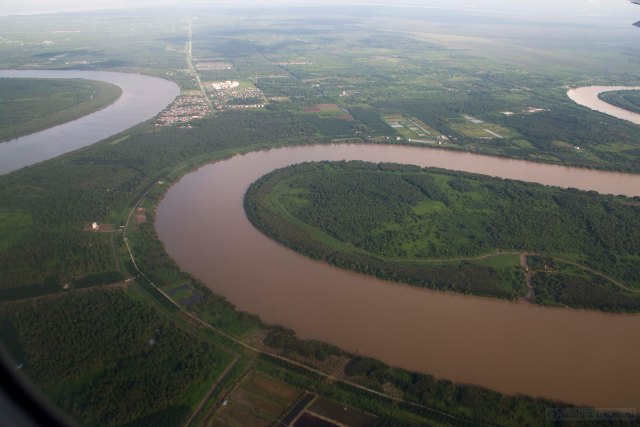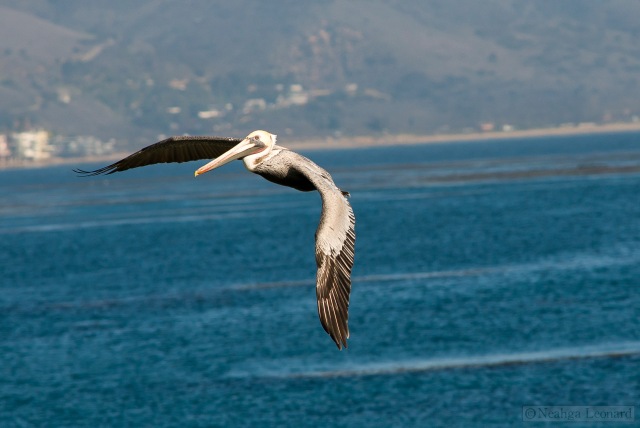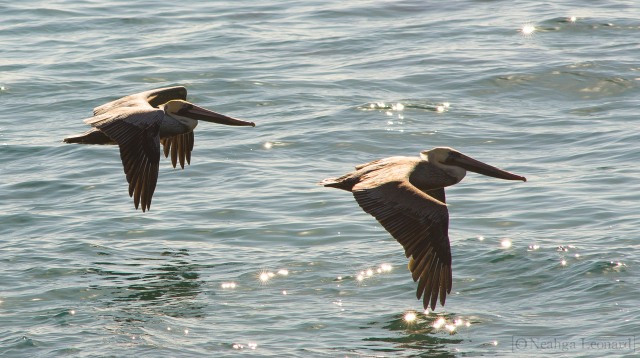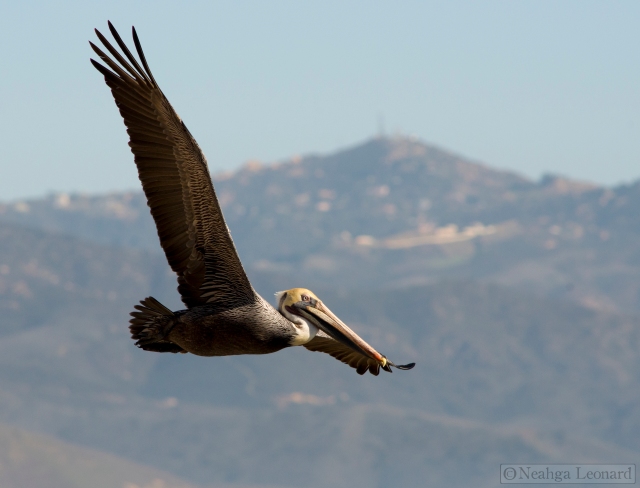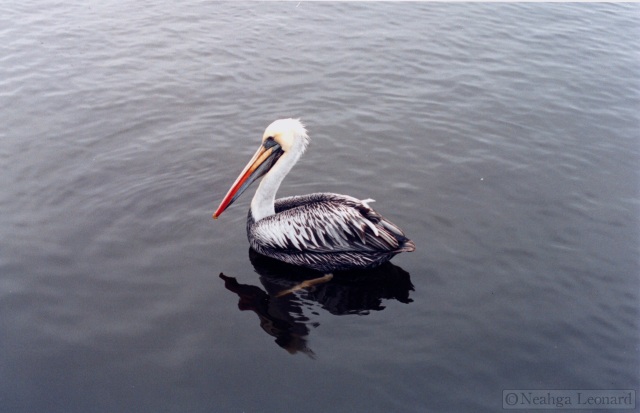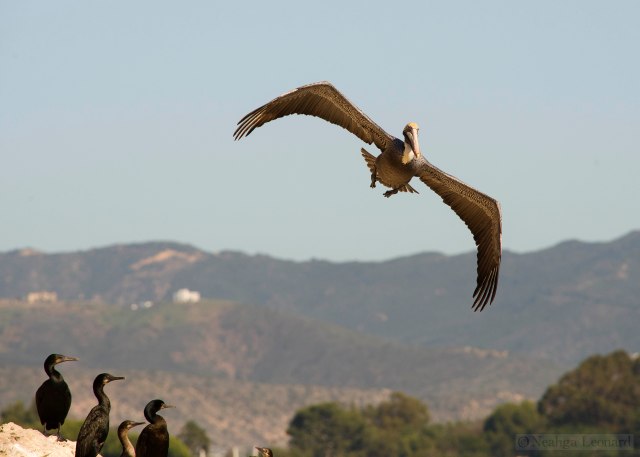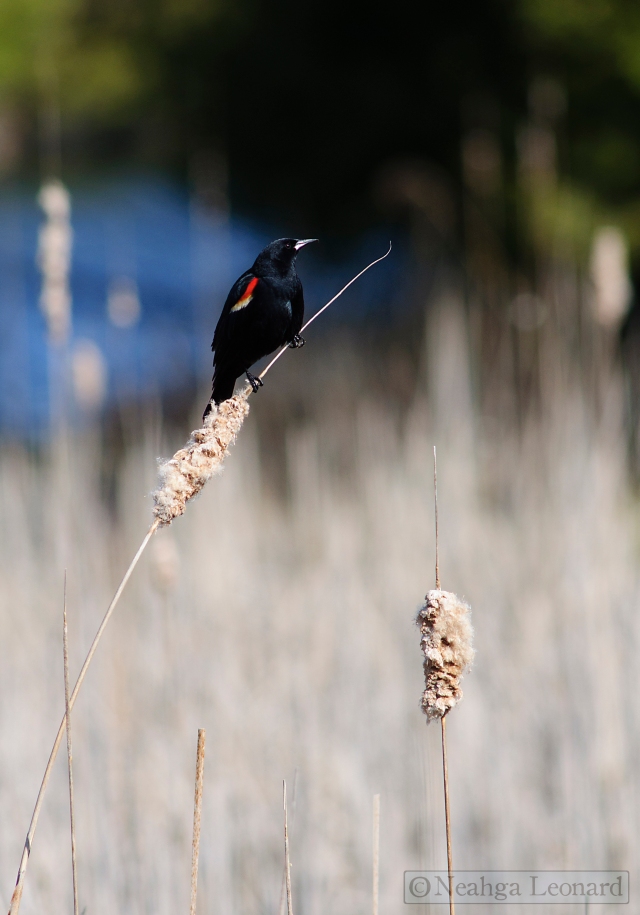Recently I flew from Istanbul to Los Angeles, following a great-circle route over Ukraine, Norway, Greenland, and Northern Canada. As I always do when flying, I got a window seat and spent most of the flight peering out the window, developing a crick in my neck that took several days to loosen.
Much of the European and Greenland portions of the flight were shrouded in clouds, leaving me watching a vast expanse of what looked like glowing cotton. Occasionally patches would open in the clouds and I would catch a brief glimpse of the land or sea below, and a look at one of the most talked about ecosystems on our planet.
The northern polar region, the Arctic. This is a vast region centered on the bath-tub-like basin of the Arctic Ocean. Discussing directions in the polar regions is tricky, for in the arctic, pretty much every direction that is not north is south, thus geography is a better indication of location than compass points. On one side the entryway to the Arctic Ocean is narrow, shallow, and flows over the ancient land-bridge that once connected North America and Asia. On the other side warm water flows up the Atlantic Ocean to the east of Greenland, keeping Europe warm and pushing the ice away from the Norwegian coast. This is the primary point of water-flow into the Arctic Ocean.
To the west of Greenland a network of channels in the Queen Elizabeth Islands lets water slowly filter out of the basin, trickling back into the Atlantic via the southern opening of Baffin Bay. Amongst the islands fierce currents keep polynyas open in the ice, providing open water for eider ducks and other sea-birds that over-winter in the Arctic. Generally the whales will leave the Arctic during winter, but sometimes they become trapped and these polynyas provide the only places they can find air to breath.
Since we have been keeping records the sea ice extent has been getting smaller and smaller. Records of sea ice extent and other cold-weather data can be found free of charge at the National Snow and Ice Data Center.
Several years ago, as part of a graduate project on Ringed Seals I looked at the changes in ice extent for the month of April over the last 30 years. The photo of the broken sea ice above was taken on the eastern side of Greenland, a place where the sea-ice is extremely variable.

1981 – 2010 April Sea Ice Extent: Darker colors indicate a greater number of years of coverage, lighter colors, fewer years of coverage – green indicates areas outside of ice-cover that are shallow enough to provide foraging areas for Ringed Seals
The little flashes of ice I got to see through the grubby Turkish Airlines plane window were tantalizing, but they were only teases. The interesting views were to come later, as we passed over the Canadian Shield.
Here, over the Canadian Shield, a 3 million square mile (8 million square kilometer) expanse of heavily weathered, exposed bedrock billions of years old the signs of past glaciation are evident. Not merely evident, the fossil tracks of vast continental glaciers shout their presence to the sky. Fortunately, I happened to be in the sky, with a camera at the ready.
There is a common misconception about glaciers. People have heard that glaciers carve channels into the bedrock and grind down mountains. This is only partially true. Ice is not very hard, by itself ice can carve channels into rock the hardness of chalk or talc, but not into tough rocks like granite, the rock much of the Canadian Shield is composed of. Ice levers out whole boulders and picks up loose material where it lies. These become embedded in the ice and these are what does the scouring and carving. The ice provides the weight and movement, much like a person provides the force when sanding or filing a piece of wood or metal, but it is the sandpaper or the file that does the actual cutting.
Ice, when it comes in glacier quantities, is an elasto-plastic material. The upper surfaces are brittle and crack, making crevasses and seracs, but the deeper ice, down below the 50 meter mark, is more akin to a slow, cold silly-putty than to the brittle thing we put in lemonade. When the ice is kilometers deep it oozes, flowing like spilled molasses over the land, dragging with it the entrained materials, grinding down high points, smoothing jagged surfaces, and hollowing out U-shaped valleys, leaving behind a stream-lined surface replete with the marks of its passage.
In both photos above the U-shaped valleys are clear. These valleys come in all sizes, some more impressive than others. The Rocky Mountain Trench in British Columbia is one of the more impressive ones, as is the Gilkey Trench in South-East Alaska.

The Gilkey Trench, the speck in the foreground is a person and each of the ripples in the bottom is 10 meters high
These valleys are often found in mountains, places where the glaciers ground out material between the peaks, but left the high places alone.
Billions of years ago the Canadian Shield used to be home to vast mountains, now they are all gone, only their roots remain. Erosion from various sources and repeated glaciations have scoured the Canadian Shield over and over again, grinding even the great mountains into low mounds, leaving traces that are best seen from the air.
The long, straight lines are old fault lines, places where geologic stresses broke the rock and let it slide against itself. Here the rock is already damaged and the glaciers excavated long channels that look like canals from the air. The distorted oval in the lower middle of the photo is where a bubble of rock forced its way up in the distant past, creating a mountain or large hill. Now it has been ground flat and shows up in the surface pattern, much like cut wood shows the pattern of knots and grain despite being smooth to the touch.
Over much of the Canadian Shield soils are shallow to non-existent. Even south of the tree-line vast areas are sparsely vegetated for lack of soil. Roads are difficult to make as the land is smooth only at large scale and it is riddled with lakes and rivers.
In the winter the smoothest parts of the Canadian Shield are the lakes themselves and they are where temporary roads are made.
The last major glaciation was relatively recent, only about 20,000 years ago and the land is still recovering from the effects. The whole Canadian Shield is undergoing isostatic rebound; with the weight of the up to 3 miles (almost 5 kilometers) of ice coming off the Earth’s crust it is now rising, seeking a new equilibrium as it floats on the liquid rock mantle deep beneath the surface. Rivers and lakes are draining, the courses sometimes shifting as the land rises, carving out new pathways. Water, like the ice it came from, does not do the work of carving the rock, it is the sediment it carries, but the Canadian Shield is made of hard stuff and it takes time to carve new channels in this durable granite.
Further south, the land is still flat, but has been overlain by a layer of sediment, left behind as the glaciers retreated. Here rivers carve into the land more easily, looping back and forth and pinching off sections of themselves. These oxbow lakes and the irregular rocky ones to the north are home to untold numbers of mosquitoes and other insects with aquatic life-phases. These insects, when they emerge, lure birds from as far away as the southern hemisphere, and the mosquitoes become the bane of any humans wandering in the vastness of northern Canada during the warm season. These insects, both adult and larval provide feed for numerous fish, making this an excellent place for fishing. The first time my family and I drove to Alaska much of our food was from fish we caught each evening after only a few minutes with a line in the water.
The glaciers that covered the Canadian Shield were continental in scale. There are only a few places where vast sheets of ice like that remain, but many places (for now) where small alpine glaciers are present, and even more places where signs of past glaciation are common.
One of the most famous of the post-glacial relics is Half Dome in the Sierra Nevada mountains of California.
The last interesting views I had out the window of my plane were of Half Dome, or Tis-sa-ack in the local native language. This sheer rock-face is a batholith, a granite upwelling often making the core of a mountain. Despite its appearance, Half Dome was not split in half, it seems to have formed more or less in the shape it has now. Glaciers have smoothed and rounded the upper surface and carved out the characteristic U-shaped valley below though.
Glaciers have had a far larger impact on the world than most people realize. Humans reached Australia some 60,000 years ago, able to walk over-land all the way to where Bali is now, needing boats only for a short stretch from Bali to Lubok. Fifteen thousand years ago people walked from Siberia to Alaska over a broad grassy plain when the sea level was some 300 feet (91 meters) lower than today as a result of the water locked up in the ice.
When Greenland and Antarctica melt (which they will eventually do with or without our presence, the only difference is when it happens) sea level will rise by some 200 feet (67 meters) above present day levels. At the moment there is a lot of talk of halting climate change via geo-engineering projects. This is talk that completely and painfully misses the point.
The climate is a dynamic system, one that experiences wide changes over long periods of time, with the changes sometimes happening rapidly. Yes, we desperately need to stop messing with the climate by releasing fossil CO2, methane, CFCs, and all the other greenhouse gasses we pump into the atmosphere with such abandon. We are pushing the natural changes hard, forcing them to be of greater magnitude and to happen faster than they would otherwise. We need to stop this, but what we do not need to and should not do is compound our mistakes by dumping iron into the oceans, pumping sulfur into the upper atmosphere, or place orbiting mirrors in space to deflect sunlight in a misguided attempt to keep the climate the way it was during the early 1900s.
We are driven by our economic system to keep things in some idealized stasis based on the time when we built our current infrastructure. We may want things to stay static, but the earth is dynamic and fluid. In our short-sighted, profit driven efforts to “save” our political and economic systems we will destroy the very thing that those systems and our societies are based on.
Seeing the earth from new perspectives and thinking about what we see tells us about the world is important. We are on a cusp, we are standing on the edge of our metaphorical Half Dome. We can tumble off the steep edge with disastrous consequences, or we can ease our way back down the slightly less steep slope, and once more enjoy the rich valley floor below.


